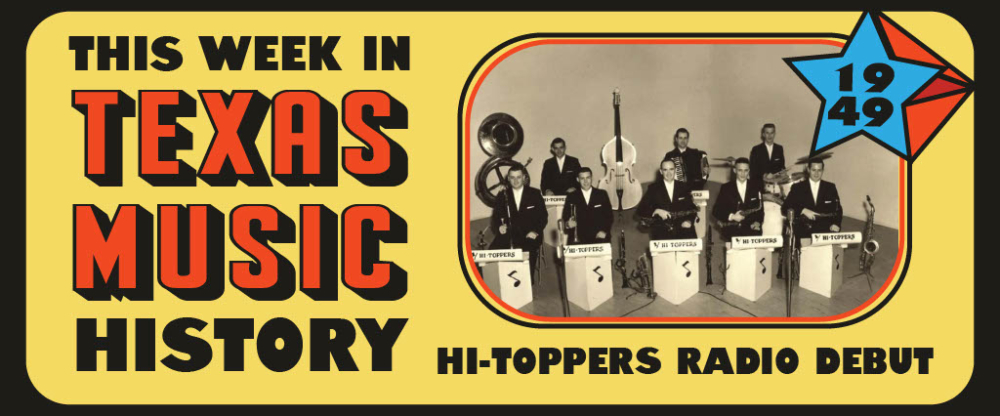This Week in Texas Music History we tour the Texan polka heartland with one of its longest-tenured acts.
On February 27, 1949, the Hi-Toppers made their first radio appearance on a show hosted by Guadalupe County Sheriff Phil Medlin on Seguin’s KWED. The band’s initial members—Gordon Zunker, Alton Rahe, and Darvin Dietert—were teenagers who had first performed their German polkas publicly just one month prior, appearing as masked musicians in New Braunfels under the name the Make or Break Band. Once on the radio, they added an accordion and drums to the trio’s trumpet, clarinet, and tuba. They also took on the name the Hi-Toppers because, as one of their fathers joked, they were high schoolers who were “tops” in music. The Hi-Toppers played regularly on the Phil Medlin Show through 1949 before moving to a New Braunfels station the following year. The radio presence helped advertise live gigs, and the Hi-Toppers were in demand for German dances in New Braunfels and at venues like Gruene Hall, where they played fifty-one dates between 1949 and 1952.



By the 1960s, the Hi-Toppers toured further afield, eventually playing at over 150 Texas dance halls, recording ten LPs, and performing at both the dedication of the LBJ National Historical Park and at the West German Embassy in Washington D.C. In 1974, the New Braunfels mayor acknowledged the work the Hi-Toppers had done across the country in celebrating Texas’s German heritage. They played their last dance on New Year’s Eve 1987. Such community orchestras as the Hi-Toppers underscore the often unacknowledged imprint of German polka in Texas music, with reverberations across conjunto, country, and western swing.
Sources:
Alton J. Rahe in Laurie E. Jasinski, Gary Hartman, Casey Monahan, and Ann T. Smith, eds. The Handbook of Texas Music. Second Edition. Denton, TX: Texas State Historical Association, 2012.
Larry Wolz, “Roots of Classical Music in Texas: The German Contribution,” in Lawrence Clayton and Joe Specht, eds. The Roots of Texas Music. College Station: Texas A & M University Press, 2003.




